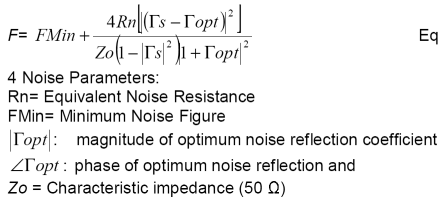Urgent!!! relationship between equivalent noise resistance and noise factor
Generally lower equivalent noise resistance (Rn), gives lower noise figure.
But because Rn it is a measured parameter, and the noise figure depends also by the optimum source admittance resulting in minimum noise figure (gamma-optimum), the above rule is not respected.
In general the noise power equals kTB for any resistor value. Equivalent noise resistance is used in low-frequency opamps to define noise VOLTAGE which must be combined with noise current to get noise power at amplifier output. At high frequencies, noise factor depends on a complex input impedance.
So you must include your frequency, type of active element and more, and the answer is not straightforward.
Equivalent Noise Resistance (Rn) is used mainly in high frequency transistors with ft frequencies up to 100GHz.
Its value DEPENDS by frequency, so cannot be compared at all with kTB which doesn't depends by frequency.
As I mentioned, Rn is a measured parameter by the manufacturer, and usually is part of the small-signal S-parameter file that includes noise figure values.

relationship Urgent equivalent 相关文章:
- Relationship between power supply switching transient and the transmitted RF signal
- Relationship of dBm Input Power and Input RF Sinusoidal Signal
- Relationship between large and small signal linearity
- SNR, P1dB relationship
- Directivity vs frequency relationship of a directional antenna
- the relationship between the SNR and the transmission range
